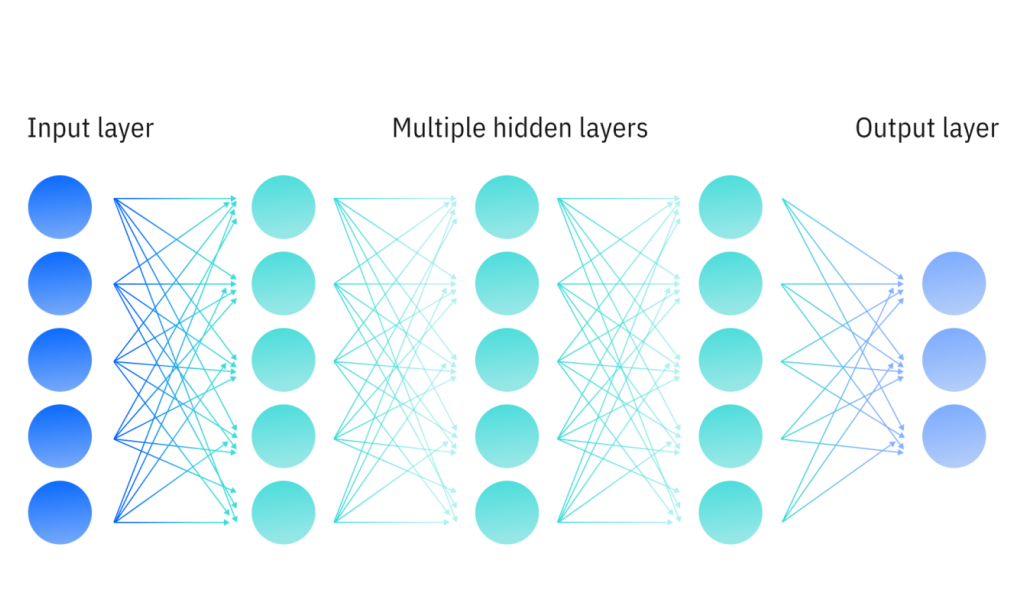Deep neural networks include an input layer, at least three but usually hundreds of hidden layers, and an output layer, unlike neural networks used in classic machine learning models, which usually have only one or two hidden layers.
These multiple layers enable unsupervised learning: they can automate the extraction of features from large, unlabeled and unstructured data sets, and make their own predictions about what the data represents.
Because deep learning doesn’t require human intervention, it enables machine learning at a tremendous scale. It is well suited to natural language processing (NLP), computer vision, and other tasks that involve the fast, accurate identification complex patterns and relationships in large amounts of data. Some form of deep learning powers most of the artificial intelligence (AI) applications in our lives today.

In a deep neural network, multiple layers of nodes can extract meaning and relationships from large volumes of unstructured, unlabeled data.
Deep learning also enables:
- Semi-supervised learning, which combines supervised and unsupervised learning by using both labeled and unlabeled data to train AI models for classification and regression tasks.
- Self-supervised learning, which generates implicit labels from unstructured data, rather than relying on labeled data sets for supervisory signals.
- Reinforcement learning, which learns by trial-and-error and reward functions rather than by extracting information from hidden patterns.
- Transfer learning, in which knowledge gained through one task or data set is used to improve model performance on another related task or different data set.



You must be logged in to post a comment.